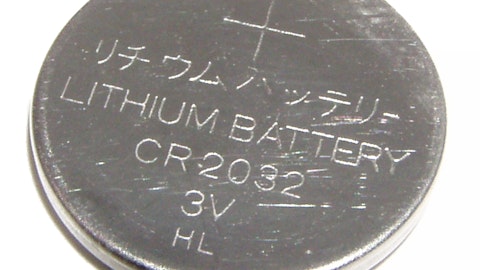Christopher Parkinson: Understood. And just a very quick follow-up, just coming back to the S-4 registration for Allkem. Just when we’re taking a step back and just looking at the initial synergies and the kind of the integration process in the first 1 or 2 years, I’m sure you’ve done a lot of work on this since the deal was initially announced a few months ago. Can you just kind of give us a quick update on your personal thought process on what needs to be done, what can be done, how quickly can be done as well as areas of potential upside, just the more you’ve been able to dive into the numbers. Thank you.
Paul Graves: Look, I think there’s two steps. I think the first and most important focus is what many of you recognize as sort of a day one readiness program. We need to sort of hit the ground the day it closes and be able to operate the two businesses as they currently are. And as part of that process, have a plan in place to tackle the cost savings, the more basic, if you will, cost savings, cost synergies that we’ve presented. And that work is advancing and I’m — but I’m very confident given the experience of both the Allkem management team given their previous merger and our management team, which while a separation is not exactly the same as many of the same processes that will tackle that pretty well. I think the second thing is to sort of take a long hard look at the business and make sure that we develop an operating model for the business that does not look like a hybrid.
It has to be 1 that reflects the asset base and the operational capabilities of the two organizations. It takes a little bit more time, but it’s probably got the biggest upside, too, I think running the business truly as a collection of integrated assets. carries the most upside, and that’s the area of my own personal focus in the period post-closing is how quickly do we move to a business that doesn’t look like Livent and it doesn’t look like Allkem and doesn’t low like some kind of hybrid mix of the two. It looks like a truly new company, and it’s being run the most efficient way relative to the asset base and the operating model.
Christopher Parkinson: Thank you. Your next question comes from the line of the Chris Kapsch with Loop Capital Markets. Your line is open.
Chris Kapsch: Good afternoon. So I want to ask question following up on Paul on your commentary about when you’re characterizing the market talking about the structural tightness and there is an inference there that that the battery grade chemicals are tighter the inference being maybe that skewed more towards hydroxide versus carbonate especially when you hear the discussion about the challenges associated with ramping a lithium hydroxide conversion just like you’re talking about in the context in Nemaska. So then separately you talked about how as you ramp your Argentine capacity that your intent right now is to kind of keep it balanced between converting downstream into hydroxide and having that carbonate sort of optionality.
So I’m just wondering if you could sort of reconcile that if the market is more tight and your customers are asking for more battery-grade hydroxide maybe then wouldn’t you be — wouldn’t that inform your sort of your roadmap in terms of capital allocation as you ramp your capacity. Thanks for taking the question.
Paul Graves: Yes well Livent — the standalone Livent has always been as you know focused on the hydroxide market. It’s where we think we have the biggest competitive advantage, the most capability to add value and it fits our business model of building close customer relationships. Our historical approach to producing lithium hydroxide though interestingly does have this capability to a degree swing between carbonate and hydroxide if the market demands. And that actually will be even more the case if we have 30,000 tons of capacity in China which is incredibly low capital and low operating cost and frankly doesn’t have to be run all the time. And if there’s opportunities in carbonate in the future, we’ll certainly be able to take advantage of them.


